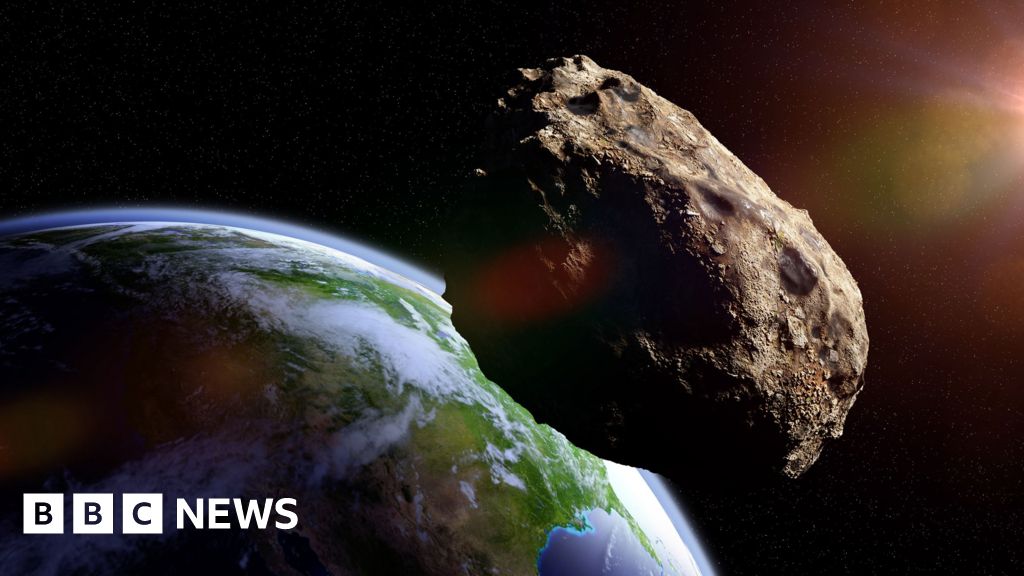
Asteroids and Their Intriguing Threats to Earth: A Closer Look at 2024 YR4
By Georgina Rannard, Climate and Science Reporter
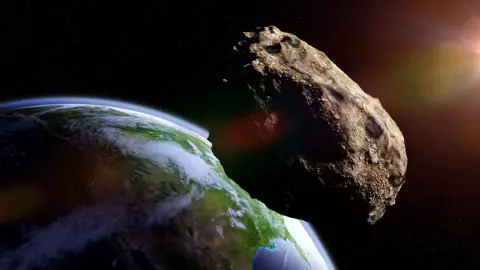
Image Credit: Getty Images
Recently, a sizable asteroid designated 2024 YR4 has captured public attention, first due to an increased estimation of its likelihood to collide with Earth, followed swiftly by a reduction of that risk. Current assessments indicate that this asteroid has a mere 0.28% probability of striking our planet in 2032, a significant decrease from the initially projected 3.1%.
Experts now believe that YR4 is more apt to collide with the Moon, with NASA estimating that this occurrence has a 1% chance. However, since the asteroid was first identified by a telescope in Chile’s desert just two months ago, dozens of other celestial bodies have passed closer to Earth than the Moon, showcasing a near-miss scenario that is quite common in astronomical terms.
While some of these smaller objects may have descended into our atmosphere or impacted Earth unnoticed, they serve as reminders of the countless asteroids that go unreported—those fleeting encounters and the eventual direct impacts we do not discuss.
The overwhelming majority of asteroids are benign, yet a select few hold crucial insights that could unravel mysteries of our universe—knowledge that we are eagerly seeking.
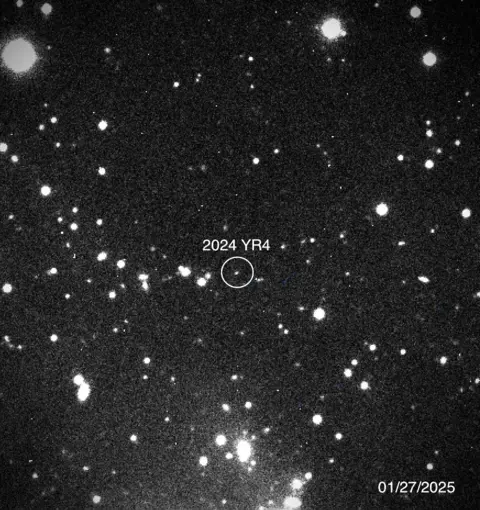
Image Credit: Drs. Bill and Eileen Ryan, Magdalena Ridge Observatory, New Mexico Tech
2024 YR4 was first spotted in December, with a slight chance of impact on December 22, 2032.
Asteroids, sometimes referred to as minor planets, are remnants from the solar system’s formation over 4.6 billion years ago. These rocky bodies frequently orbit in proximity to Earth due to the gravitational pull exerted by other celestial bodies.
Historically, humanity has had little understanding of how close we may be to a major asteroid collision. Comprehensive monitoring efforts did not gain momentum until the late 20th century, as noted by Professor Mark Boslough from the University of New Mexico, who highlights our past ignorance of such threats.
Today, we have learned that substantial objects—measuring 40 meters or larger—frequently traverse the space between Earth and the Moon multiple times each year. This size corresponds to the asteroid that detonated over Siberia in 1908, causing injury and destruction in an area exceeding 200 square miles.
A notable near-miss with potential parallels to YR4 involved the asteroid Apophis, measuring 375 meters across and first detected in 2004. Professor Patrick Michel from the French National Centre for Scientific Research tracked Apophis, which was initially deemed the most dangerous asteroid known.
While it took until 2013 to ascertain that Apophis posed no threat, significant developments in planetary defense strategies have since emerged. Professor Michel notes the urgency of determining an appropriate response once a threat is identified, as prior teams were left pondering their next steps after discovering the asteroid’s risk.

Potential Implications of an Asteroid Impact
Should a large asteroid strike, particularly in populated regions, the consequences could be dire. While the exact dimensions of YR4 remain uncertain, estimates suggest it could reach up to 90 meters in diameter. If so, it may not disintegrate upon atmospheric entry, possibly resulting in significant damage, including a crater large enough to destroy nearby structures and injure individuals in the immediate area, according to Professor Kathryn Kunamoto from Lawrence Livermore National Laboratory.
Fortunately, advancements in planetary defense initiatives have progressed significantly since the days of Apophis. The international Space Mission Planning Advisory Group advises governments on how to prepare for asteroid-related threats and simulates hypothetical collision scenarios—activities that indicate growing preparedness.
For instance, if an asteroid were on a collision course with a city, Dr. Boslough compares the response to comprehensive hurricane preparedness, encompassing evacuations and infrastructure protections. The Group plans to reconvene in April to discuss YR4 and expects that the associated risk will diminish as further calculations clarify its trajectory.
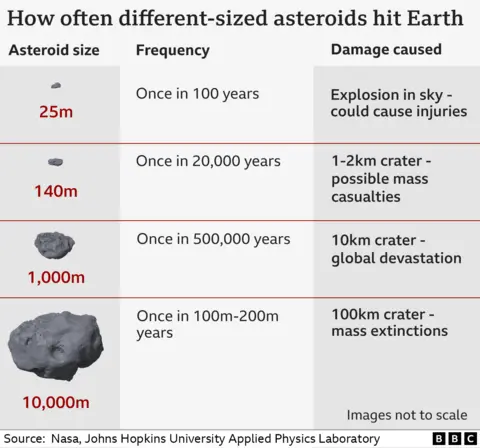
Nudging Dangerous Asteroids Off Course
Fortunately, scientists have developed strategies beyond simply enduring a collision. NASA and the European Space Agency are pioneering technologies capable of altering the paths of hazardous asteroids. NASA’s Double Asteroid Redirection Test (DART) successfully impacted an asteroid called Dimorphos, shifting its trajectory—a feat, however, that might not be achievable with YR4 due to uncertainties surrounding its composition and the limited time available for a successful deflection.
Yet, when considering asteroids that do reach Earth, striking land far from human habitats would be the most advantageous scenario for scientists. Such impacts yield materials from ancient celestial bodies and provide essential insight into Earth’s impact history.
An estimated 50,000 asteroids have been identified in Antarctica, with the most renowned, ALH 84001, originating from Mars and containing minerals that hold clues to the planet’s water-rich past billions of years ago. More recently, the discovery of the asteroid 33 Polyhymnia, which may contain a previously unrecorded dense element, indicates the vast potential asteroids hold for advancing our understanding of the universe.
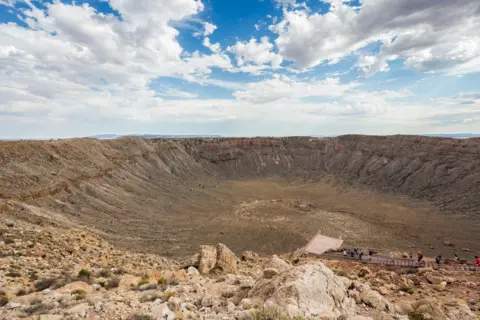
Image Credit: Getty Images
The Barringer Crater in Arizona was created by a meteorite about 50 meters across, which impacted 50,000 years ago.
After recent evaluations lowered the chance of YR4 striking Earth, some researchers express curiosity about its potential Moon impact. Such an event could yield invaluable data that remains elusive in simulations. Accumulating real-world impact data would empower scientists to validate their predictive models regarding asteroid collisions with Earth.
The trajectory of asteroid 2024 YR4 serves as a reminder of our planet’s susceptibility to celestial collisions. Experts caution against complacency, emphasizing the inevitability of future threats posed by large asteroids, albeit likely in the distant future.
In the meantime, advancements in space monitoring technologies, such as the upcoming Vera Rubin Observatory’s groundbreaking digital camera, will enhance our ability to monitor the night sky.
As we continue to scan the cosmos, the opportunity to uncover the mysteries of the universe grows ever closer.









